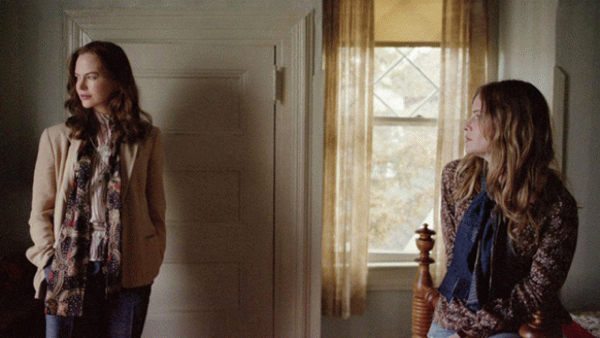Movie review by Greg Carlson
Writer-director Noah Baumbach’s most recent movie, “Margot at the Wedding,” is a polarizing experience that will alienate at least as many viewers as it enchants. Critic-proof in the sense that it wholly embraces the selfish, sadistic, and shitty narcissists whose frustrating lives it illustrates, the movie serves in some ways as a grim companion to Baumbach’s previous outing, “The Squid and the Whale,” a stronger film in virtually every capacity. Gruesome, hateful characters don’t necessarily translate to gruesome and hateful moviegoing experiences, but “Margot at the Wedding” defies its audience to sympathize with its inhabitants, a pack of emotionally damaged jackals who practically lick their chops at the opportunity to snipe, whine, and grouse at one another.
As the title character, Nicole Kidman uses her icy charisma to terrific effect. Traveling to her sister’s nuptials with all kinds of self-serving motives, writer Margot spends most of her time inappropriately blurting family secrets to her curious but confused son Claude (Zane Pais). She also mines family pain for her short stories. Margot’s sister Pauline (Jennifer Jason Leigh, whose husband is the film’s auteur) plans to marry the clownish, unsavory, and unemployed Malcolm (Jack Black), and Margot immediately disapproves of the match, peppering her commentary with barbed, contemptuous insults.
As a director, Baumbach displays an almost reckless confidence that his audience will appreciate a plotless psychodrama that clearly contains a splash of Bergman and a jigger of Chekhov. It’s refreshing to find a dark-hearted movie with such well-known performers, but the psychological warfare waged among blood relations, friends, and neighbors has a tiring effect. The metaphoric rotting tree, under which Pauline and Malcolm intend to be married, is the least subtle of symbols, and its fate is sealed as soon as it is glimpsed in Harris Savides’ gray-hued cinematography.
Given the centrality of the family tree motif, “Margot at the Wedding” might have been a more powerful experience had Baumbach spent as much time with the children as he does with the adults. The filmmaker’s uncanny understanding of the pain and challenges of adolescence, perfectly tuned in “The Squid and the Whale,” is only hinted at here. Claude, his cousin Ingrid (Flora Cross), and neighbor Maisy (Halley Feiffer) form a trio with as many possibilities as the grown-ups around them, but short of a scene or two, Baumbach leaves their inner lives unexplored.
The movie’s disjointed, episodic structure is also its principal cinematic strong suit. Aided by editor Carol Littleton, Baumbach stitches moments together with an array of interesting juxtapositions and jump cuts. Often, we enter or exit scenes in the midst of the action, a stylistic device that intensifies the movie’s sense of anxiety. While some viewers might argue that too many people spend too much time crying or running and falling down, Baumbach locates the humor that emerges from our ability to identify with humiliation, even if the movie presents it in concentrated form. At one point Pauline defecates in her drawers, and Margot’s response is to remind Claude that sooner or later, this will happen to all of us.
